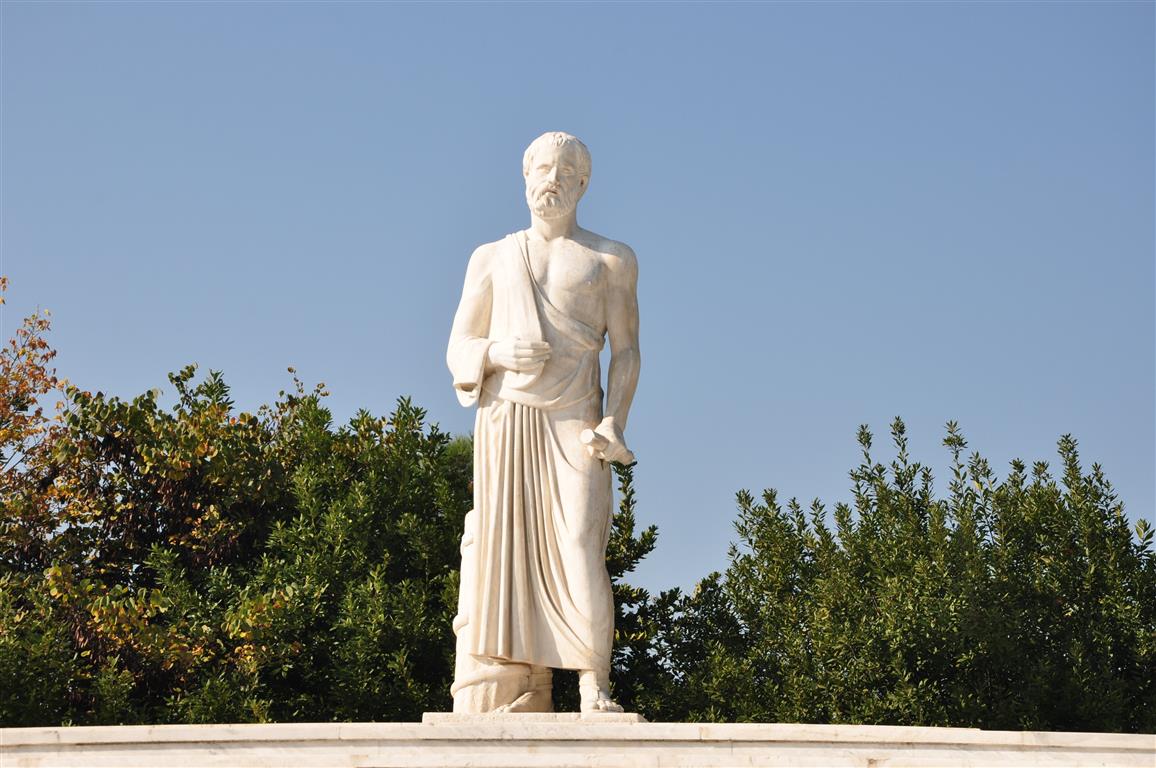Theokritos was a Hellenic bucolic poet who flourished in Syracuse, Kos and Alexandria in the 3rd century BC. His surviving work can mostly be found within an old compendium of 30 poems known as the "Idylls of Theocritus," Many of these works, however, are no longer attributed to the poet. In "
Idyll 1" Thyrsis sings to a goatherd about how Daphnis, the mythical herdsman, having defied the power of Aphrodite, dies rather than yielding to a passion the Goddess has inflicted on him. It's a lovely song and I would like to share it with you today.
"‘Tis Thyrsis sings, of Etna, and a rare sweet voice hath he.
Where were ye, Nymphs, when Daphnis pined? ye Nymphs, O where were ye?
Was it Peneius’ pretty vale, or Pindus’ glens? ‘twas never
Anápus’ flood nor Etna’s pike nor Acis’ holy river.
Country-song, sing country-song, sweet Muses.
When Daphnis died the foxes wailed and the wolves they wailed full sore,
The lion from the greenward wept when Daphnis was no more.
Country-song, sing country-song, sweet Muses.
O many the lusty steers at his feet, and may the heifers slim,
Many the claves and many the kine that made their moan for him.
Country-song, sing country-song, sweet Muses.
Came Hermes first, from the hills away, and said “O Daphnis tell,
“Who is’t that fretteth thee, my son? whom lovest thou so well?”
Country-song, sing country-song, sweet Muses.
The neatherds came, the shepherds came, and the goatherds him beside,
All fain to hear what ail’d him; Priápus came and cried
“Why peak and pine, unhappy wight, when thou mightest bed a bride?
“For there’s nor wood nor water but hath seen her footsteps flee –
Country-song, sing country-song, sweet Muses –
“In search o’ thee. O a fool-in-love and a feeble is here, perdye!
“Neatherd, forsooth? ‘tis goatherd now, or ‘faith, ‘tis like to be;
“When goatherd in the rutting-time the skipping kids doth scan,
“His eye grows soft, his eye grows sad, because he’s born a man; –
Country-song, sing country-song, sweet Muses –
“So you, when ye see the lasses laughing in gay riot,
“Your eye grows soft, your eye grows sad, because you share it not.”
But never a word said the poor neathérd, for a bitter love bare he;
And he bare it well, as I shall tell, to the end that was to be.
Country-song, more country-song, ye Muses.
But and the Cyprian came him to, and smiled on him full sweetly –
For thou she fain would foster wrath, she could not choose but smile –
And cried “Ah, braggart Daphnis, that wouldst throw Love so featly!
“Thou’rt thrown, methinks, thyself of Love’s so grievous guile.”
Country-song, more country-song, ye Muses.
Then out he spake; “O Cypris cruel, Cypris vengeful yet,
“Cypris hated of all flesh! think’st all my sun be set?
“I tell thee even ‘mong the dead Daphnis shall work thee ill: –
Country-song, more country-song, ye Muses.
“Men talk of Cypris and the hind; begone to Ida hill,
“Begone to hind Anchises; sure bedstraw there doth thrive
“And fine oak-trees and pretty bees all humming at the hive.
Country-song, more country-song, ye Muses.
“Adonis too is ripe to woo, for a ‘tends his sheep o’ the lea
“And shoots the hare and a-hunting goes of all the beasts there be.
Country-song, more country-song, ye Muses.
And then I’ld have thee take thy stand by Diomed, and say
“’I slew the neatherd Daphis; fight me thou to-day.’
Country-song, more country-song, ye Muses.
“But ‘tis wolf farewell and fox farewell and bear o’ the mountain den,
“Your neatherd fere, your Daphnis dear, ye’ll never see agen,
“By glen no more, by glade no more. And ‘tis o farewell to thee
“Sweet Arethuse, and all pretty watérs down Thymbris vale that flee.
Country-song, more country-song, ye Muses.
“For this, O this is that Daphnis, your kine to field did bring,
“This Daphnis he, led stirk and steer to you a-watering.
Country-song, more country-song, ye Muses.
“And Pan, O Pan, whether at this hour by Lycee’s mountain-pile
“Or Maenal steep thy watch thou keep, come away to the Sicil isle,
“Come away from the knoll of Helicè and the howe lift high i ’ the lea,
“The howe of Lycáon’s child, the howe that Gods in heav’s envye;
Country-song, leave country-song, ye Muses.
“Come, Master, and take this pretty pipe, this pipe of honey breath,
“Of wax well knit round lips to fit; for Love hales mé to my death.
Country-song, leave country-song, ye Muses.
“Bear violets now ye briers, ye thistles violets too;
“Daffodilly may hang on the juniper, and all things go askew;
“Pines may grow figs now Daphnis dies, and hind tear hound if she will,
“And the sweet nightingále be outsung I ’ the dale by the scritch-owl from the hill.”
Country-song, leave country-song, ye Muses.
Such words spake he, and he stayed him still; and O, the Love-Ladye,
She would fain have raised him where he lay, but that could never be.
For the thread was spun and the days were done and Daphnis gone to the River,
And the Nymphs’ good friend and the Muses’ fere was whelmed I ’ the whirl for ever."






